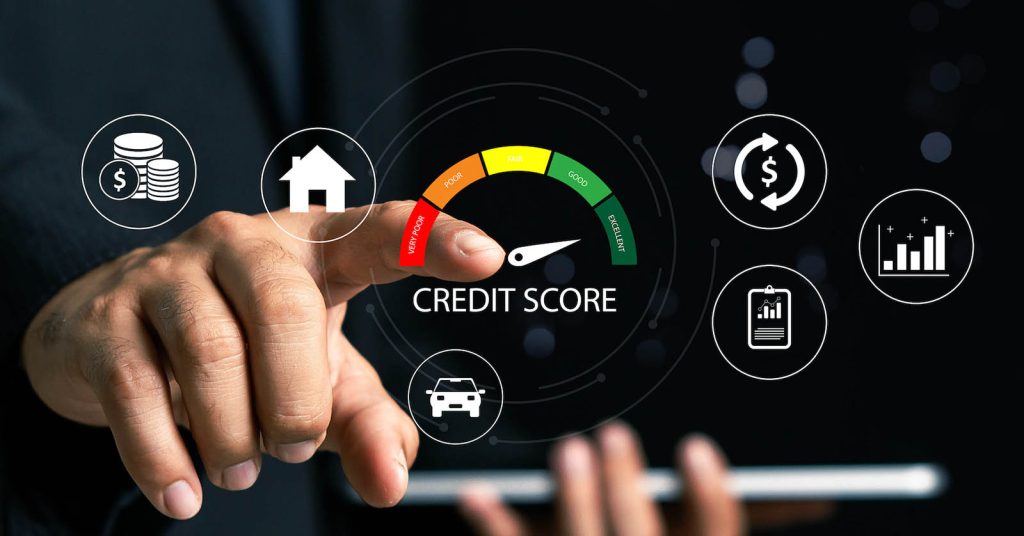Credit is simply trust made measurable. Lenders look at your past borrowing and repayment behavior to estimate the risk of lending to you today. That evidence lives in your credit reports (files maintained by Equifax, Experian, and TransUnion) and is summarized by credit scores (FICO® and VantageScore® being the most common). If you’re new to credit — or rebuilding — this guide gives you the plain-English essentials: where your data comes from, how scores are calculated, how interest and billing actually work, and the fastest, safest ways to build positive history. We cite primary sources (CFPB/FTC, FICO, VantageScore, and bureaus) so you can verify every step.
Key Takeaways
- Reports vs. scores: Credit reports come from Equifax, Experian, and TransUnion; scores (FICO®, VantageScore®) are models built from those reports. You can now get free weekly reports permanently at AnnualCreditReport.com.
- The big five score factors (FICO): Payment history (≈35%), amounts owed/credit utilization (≈30%), length of history (≈15%), new credit (≈10%), and credit mix (≈10%). On-time payments and low utilization do most of the work.
- Utilization matters: Keep card balances low relative to limits (commonly under ~30% — lower is better) to support higher scores.
- Grace period = no interest when paid in full: Most cards offer a window from statement close to due date where purchases don’t accrue interest if you pay the statement balance by the due date.
- Hard vs. soft inquiries: Checking your own report/score is a soft inquiry and doesn’t affect your score; credit applications create hard inquiries that can trim points briefly.
- Check and dispute errors: Use your weekly free reports to spot mistakes early; the FCRA gives you rights to dispute and get inaccurate data corrected.
Credit reports vs. credit scores
A credit report is a detailed file of your accounts (credit cards, loans), payment history, balances, and certain negative items (late payments, collections, bankruptcies). Each of the three nationwide bureaus — Equifax, Experian, and TransUnion — maintains its own version, so details can differ. By federal law you can get reports for free from AnnualCreditReport.com; since 2024, the agencies have made free weekly reports permanent, making it easy to check frequently for accuracy and identity theft. A credit score is a three-digit prediction (typically 300–850) computed from what’s in a report. Lenders most often use FICO Scores; VantageScore is also widely used for education and some lending.
| Thing | Who makes it | What it contains / does | How you get it |
|---|---|---|---|
| Credit report | Equifax, Experian, TransUnion | Accounts, limits, balances, on-time/late payments, collections, public records | Free at AnnualCreditReport.com (now weekly). |
| FICO Score | FICO (uses bureau data) | Lender-favored score; factors include payment history, utilization, age, mix, new credit | From many banks or FICO; ranges 300–850. |
| VantageScore | VantageScore (uses bureau data) | Alternative scoring models (current model: VS 4.0); tri-bureau design, modern attributes | Often free via credit apps or bureaus. |
What drives your score (the big five — by FICO)
FICO publicly lists five factor groups. While exact math is proprietary, their weight ranges are consistent across many versions: payment history (35%), amounts owed/credit utilization (30%), length of credit history (15%), new credit/inquiries (10%), and credit mix (10%). That’s why on-time payments and low card balances relative to limits do most of the scoring work.
- Payment history (35%). Late payments, collections, and defaults weigh heavily; a long on-time streak helps most.
- Amounts owed (30%). The key metric is credit utilization — your balances ÷ limits on revolving accounts. Keeping utilization low (many educators suggest under ~30%; lower is better) supports higher scores.
- Length/age (15%). Older average account age helps; closing your oldest card can shorten it.
- New credit (10%). Hard inquiries (applications) can ding scores briefly; soft inquiries (your own checks, pre-screens) don’t affect scores.
- Mix (10%). Having both revolving (cards) and installment (loans) can help, but never open debt just for “mix.”
How credit cards actually charge interest (APR, daily rate & grace period)
Most cards compute interest using a daily periodic rate applied to your balance each day (often using the average daily balance method). Interest compounds daily: yesterday’s interest is added to today’s balance. The way out is the grace period — the gap between the statement closing date and the due date — during which purchases accrue no interest if you pay the statement balance in full by the due date. Issuers aren’t required to offer a grace period, but most do for purchases. Paying in full every cycle keeps interest at zero; paying early in the cycle reduces interest if you’re carrying a balance.
Building (or rebuilding) credit — fast, safe, and simple
You don’t need tricks; you need a few reliable moves that map to the factors above:
- Open a starter line you can manage. If you’re new or recovering, begin with a secured card or a starter unsecured card from a mainstream bank/credit union. Use it for a small recurring bill and pay in full each month.
- Keep utilization low, naturally. Two easy ways: (1) pay mid-cycle so reported balances stay low; (2) spread spending across cards you already have (don’t overspend).
- Leave good old accounts open. A no-fee older card supports average age and available limit — both are score-friendly.
- Be selective with applications. Each hard pull can trim points temporarily; batch rate-shopping for auto/mortgage in a tight window so they count as one (model-dependent).
- Add non-traditional data only when it helps. Rent and certain utilities can be reported via third-party services; they help some thin files but won’t fix late payments elsewhere.
- Check reports often; dispute errors quickly. Weekly free reports make this easy; furnishers and bureaus have defined timelines to investigate disputes (typically 30 days; up to 45 in some circumstances).
Common myths (and the truth)
- “Carrying a balance helps my score.” False. You don’t need to pay interest to build credit. Paying in full maintains on-time history and keeps utilization low.
- “Checking my own score/report hurts me.” False. That’s a soft inquiry; it doesn’t affect scores.
- “Closing a card always boosts my score.” Often false. It can lower available credit (raising utilization) and cut account age.
- “All scores are the same.” False. FICO and VantageScore are different models; lenders may use different versions for different products.
Negative items: what happens when things go wrong
Late payments and other derogatories are not permanent, but they do matter. Under the Fair Credit Reporting Act, negative items generally age off after set periods (for example, many delinquencies and collections after ~7 years; hard inquiries after ~2 years; bankruptcies 7–10 years depending on chapter). You can’t force accurate negative data off early, but you can add positive on-time history going forward, which reduces the impact as time passes. If something is wrong, you can dispute it with the bureau(s) and furnisher; they must investigate within specific timelines.
Step-by-step: your first 30 days with credit
- Pull all three reports (free, weekly if you like). Review personal info, accounts, and negative items; make a list of anything unfamiliar.
- Open (or designate) one small, affordable card. Put a single recurring bill on it. Set autopay to the statement balance so you never carry interest unless you choose to. Understand your card’s grace period.
- Set two payment habits now. (a) Pay on time every month (payment history drives scores). (b) Pay early or multiple times if balances creep up — this keeps utilization low.
- Turn on account alerts. Low-balance and large-transaction alerts catch mistakes and fraud early; combine with weekly report checks.
- Apply sparingly. Only when you need credit (or a clear upgrade), and space applications to avoid avoidable inquiry dings; rate-shop within a short window for auto/mortgage.
Frequently Asked Questions (FAQs)
Do I need both FICO and VantageScore?
You don’t need both, but it helps to know they exist. Many lenders use FICO; educational apps often show VantageScore. If one looks odd, check the underlying report for errors.
What’s a “good” score?
Exact cutoffs vary by lender and version, but many lenders consider FICO 670+ as “good” territory. Focus on on-time payments and low utilization; scores will follow.
Will paying in full hurt my score because my utilization is 0%?
No. Paying in full is ideal. If a statement cuts with a $0 balance, your revolving utilization reports as 0% — which is fine. Some people let a tiny amount report and pay it off by the due date, but it’s not required for good scores.
How do inquiries work?
Soft inquiries (your own checks, pre-screens) don’t affect scores. Hard inquiries (applications) can trim points for about a year and remain visible for two; rate-shopping windows can count as one for certain loans.
How fast can I improve my score?
You can add positive data the very next reporting cycle by making on-time payments and lowering reported balances. Removing verified, accurate negatives isn’t possible — only time and new positive history reduce their weight.
What if there’s an error on my report?
Dispute with the bureau(s) and furnisher. Investigations generally run about 30 days; in some circumstances (e.g., after a free annual report dispute or supplemental info) timelines can extend up to 45 days.
Does closing a card help?
Usually not. Closing can raise utilization and may shorten your average age later. Prefer keeping no-fee cards open and unused or for a small autopay.
What’s the best way to avoid interest?
Use your grace period: pay the statement balance by the due date every cycle. If you carry a balance, pay early and often to reduce daily interest accrual.
Sources
- AnnualCreditReport.com — Request your reports
- FTC — Free weekly credit reports (permanent)
- FICO — What’s in your FICO Score
- VantageScore — 4.0 attributes overview
- CFPB — Daily periodic rate
- CFPB — Grace period
- CFPB — How issuers calculate interest
- CFPB — Summary of your rights under FCRA
- CFPB — Credit inquiries (soft vs hard)
- CFPB — Credit score myths & utilization
- Experian — Utilization rate basics
- Investopedia — How long negatives stay









